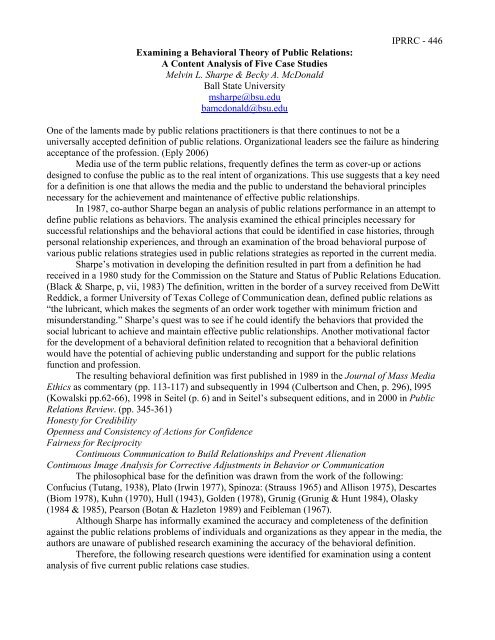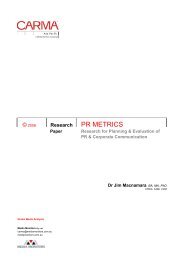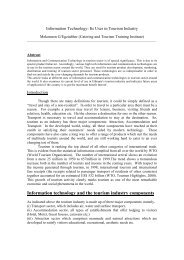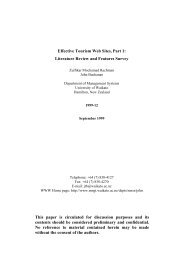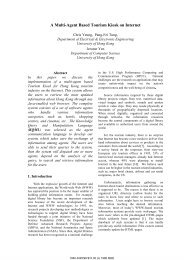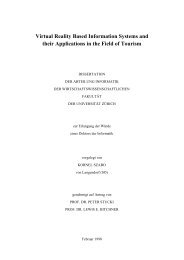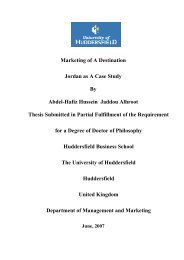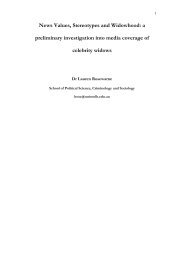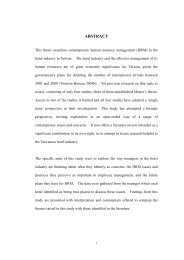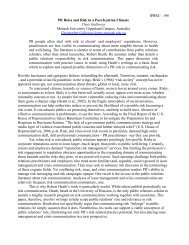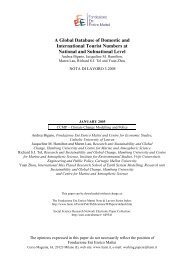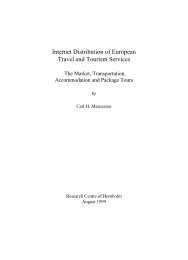Examining a Behavioral Theory of Public Relations-A
Examining a Behavioral Theory of Public Relations-A
Examining a Behavioral Theory of Public Relations-A
You also want an ePaper? Increase the reach of your titles
YUMPU automatically turns print PDFs into web optimized ePapers that Google loves.
<strong>Examining</strong> a <strong>Behavioral</strong> <strong>Theory</strong> <strong>of</strong> <strong>Public</strong> <strong>Relations</strong>:<br />
A Content Analysis <strong>of</strong> Five Case Studies<br />
Melvin L. Sharpe & Becky A. McDonald<br />
Ball State University<br />
msharpe@bsu.edu<br />
bamcdonald@bsu.edu<br />
IPRRC - 446<br />
One <strong>of</strong> the laments made by public relations practitioners is that there continues to not be a<br />
universally accepted definition <strong>of</strong> public relations. Organizational leaders see the failure as hindering<br />
acceptance <strong>of</strong> the pr<strong>of</strong>ession. (Eply 2006)<br />
Media use <strong>of</strong> the term public relations, frequently defines the term as cover-up or actions<br />
designed to confuse the public as to the real intent <strong>of</strong> organizations. This use suggests that a key need<br />
for a definition is one that allows the media and the public to understand the behavioral principles<br />
necessary for the achievement and maintenance <strong>of</strong> effective public relationships.<br />
In 1987, co-author Sharpe began an analysis <strong>of</strong> public relations performance in an attempt to<br />
define public relations as behaviors. The analysis examined the ethical principles necessary for<br />
successful relationships and the behavioral actions that could be identified in case histories, through<br />
personal relationship experiences, and through an examination <strong>of</strong> the broad behavioral purpose <strong>of</strong><br />
various public relations strategies used in public relations strategies as reported in the current media.<br />
Sharpe’s motivation in developing the definition resulted in part from a definition he had<br />
received in a 1980 study for the Commission on the Stature and Status <strong>of</strong> <strong>Public</strong> <strong>Relations</strong> Education.<br />
(Black & Sharpe, p, vii, 1983) The definition, written in the border <strong>of</strong> a survey received from DeWitt<br />
Reddick, a former University <strong>of</strong> Texas College <strong>of</strong> Communication dean, defined public relations as<br />
“the lubricant, which makes the segments <strong>of</strong> an order work together with minimum friction and<br />
misunderstanding.” Sharpe’s quest was to see if he could identify the behaviors that provided the<br />
social lubricant to achieve and maintain effective public relationships. Another motivational factor<br />
for the development <strong>of</strong> a behavioral definition related to recognition that a behavioral definition<br />
would have the potential <strong>of</strong> achieving public understanding and support for the public relations<br />
function and pr<strong>of</strong>ession.<br />
The resulting behavioral definition was first published in 1989 in the Journal <strong>of</strong> Mass Media<br />
Ethics as commentary (pp. 113-117) and subsequently in 1994 (Culbertson and Chen, p. 296), l995<br />
(Kowalski pp.62-66), 1998 in Seitel (p. 6) and in Seitel’s subsequent editions, and in 2000 in <strong>Public</strong><br />
<strong>Relations</strong> Review. (pp. 345-361)<br />
Honesty for Credibility<br />
Openness and Consistency <strong>of</strong> Actions for Confidence<br />
Fairness for Reciprocity<br />
Continuous Communication to Build <strong>Relations</strong>hips and Prevent Alienation<br />
Continuous Image Analysis for Corrective Adjustments in Behavior or Communication<br />
The philosophical base for the definition was drawn from the work <strong>of</strong> the following:<br />
Confucius (Tutang, 1938), Plato (Irwin 1977), Spinoza: (Strauss 1965) and Allison 1975), Descartes<br />
(Biom 1978), Kuhn (1970), Hull (1943), Golden (1978), Grunig (Grunig & Hunt 1984), Olasky<br />
(1984 & 1985), Pearson (Botan & Hazleton 1989) and Feibleman (1967).<br />
Although Sharpe has informally examined the accuracy and completeness <strong>of</strong> the definition<br />
against the public relations problems <strong>of</strong> individuals and organizations as they appear in the media, the<br />
authors are unaware <strong>of</strong> published research examining the accuracy <strong>of</strong> the behavioral definition.<br />
Therefore, the following research questions were identified for examination using a content<br />
analysis <strong>of</strong> five current public relations case studies.
IPRRC - 447<br />
R1: Are the behaviors identified in the definition complete in identifying the principles essential for<br />
effective public relations performance?<br />
R2: Is the purpose stated in each behavioral principle accurate in describing the reasons for each<br />
behavioral principle?<br />
R3: If the behaviors and their purpose identified in the definition appear to be complete and<br />
accurate, can conclusions be drawn as to the value <strong>of</strong> the definition in building public, media, and<br />
corporate management understanding <strong>of</strong> the public relations function?<br />
Review <strong>of</strong> Literature<br />
The persistent and perennial problem <strong>of</strong> defining public relations comes up almost every time<br />
public relations practitioners and educators gather. Likewise, the discussion has been present in the<br />
scholarly literature.<br />
Anyone who has taught an introductory public relations course or tried to explain the nature<br />
<strong>of</strong> a public relations job to someone not familiar with the pr<strong>of</strong>ession knows the challenge. There just<br />
isn’t one acceptable universal definition <strong>of</strong> public relations. Instead there are many.<br />
Early attempts to define public relations are familiar to almost anyone who has taken a<br />
fundamental course. One <strong>of</strong> the earliest public relations practitioners, Edward Bernays, identified<br />
public relations as “ the attempt, by information, persuasion and adjustment, to engineer public<br />
support for an activity, cause, movement or institution.” (Hutton, 1999)<br />
In the mid-1970s, Harlow examined previous definitions <strong>of</strong> public relations in an attempt to<br />
identify common themes by reviewing early literature and public relations definitions.<br />
Later in the 1970s, he used information from 472 different definitions and 65 practitioners to<br />
<strong>of</strong>fer a comprehensive definition: “<strong>Public</strong> relations is a distinctive management function which helps<br />
establish and maintain mutual lines <strong>of</strong> communication, understanding, acceptance and cooperation<br />
between an organization and its publics; involves the management <strong>of</strong> problems or issues; helps<br />
management to keep informed on and responsive to public opinion; defines and emphasizes the<br />
responsibility <strong>of</strong> management to serve the public interest; helps management keep abreast and<br />
effectively utilize change; serving as an early warning system to help anticipate trends; and uses<br />
research and sound and ethical communication techniques as its principal tools.” (Hutton, 1999)<br />
A 1978 World Assembly <strong>of</strong> <strong>Public</strong> <strong>Relations</strong> in Mexico City defined public relations as “ the<br />
art and science <strong>of</strong> analyzing trends, predicting their consequences, counseling organizational leaders,<br />
and implementing planned programs <strong>of</strong> action which serve both the organization and the public<br />
interest.” (Sharpe, 2000)<br />
In 1975, the Foundation for <strong>Public</strong> <strong>Relations</strong> Research and Education <strong>of</strong>fered an 88-word<br />
definition calling public relations a “distinctive management function which helps establish and<br />
maintain mutual lines <strong>of</strong> communications, understanding, acceptance, and cooperation between an<br />
organization and its publics.”<br />
Hutton’s analysis <strong>of</strong> the status <strong>of</strong> public relations sees the pr<strong>of</strong>ession as suffering “from an<br />
identity crisis – largely <strong>of</strong> its own making.” (1999) This failure to adequately define itself has resulted<br />
in a “void,” said Hutton, which has been filled by those outside the field <strong>of</strong> public relations, “<br />
particularly its critics.”<br />
Robert Heath dealt with the question <strong>of</strong> definition in the first section <strong>of</strong> his Handbook <strong>of</strong><br />
<strong>Public</strong> <strong>Relations</strong> (2001). Heath suggested that the search for a definition <strong>of</strong> public relations forces<br />
consideration <strong>of</strong> the “rationale for public relations – the definition <strong>of</strong> the discipline.”<br />
Noting future directions for public relations, he observed that the ‘heart <strong>of</strong> the new view <strong>of</strong> the<br />
practice <strong>of</strong> public relations is the mutually beneficial relationships that an organization needs to enjoy<br />
a license to operate.”
IPRRC - 448<br />
A search <strong>of</strong> the literature did not reveal any definitions identifying behaviors necessary for the<br />
practice <strong>of</strong> public relations.<br />
Methodology<br />
Five current case studies were selected for content analysis. The cases were (1) the Air Force<br />
Academy’s sexual assault allegations (Ballard and Thompson 2003), (2) the accusation <strong>of</strong> insider<br />
trading against Martha Stewart (Barankevych and Boone 2003), (3) Toronto’s handling <strong>of</strong> the 2003<br />
SARS outbreak (Crimmins and Mathews 2003), (4) Duke University Medical Center’s handling <strong>of</strong> a<br />
deadly heart-lung transplant error (Richardson and Sines 2003), and (5) a cloistered Carmelite<br />
Monastery decision to open itself to combat an increasing decline in membership (Sipes and Puls<br />
2003). (See Appendix)<br />
A coding sheet was developed by the co-authors that would cause coders to identify the five<br />
behavioral principles if they existed in a case, the abuse <strong>of</strong> a principle if abuse appeared to be<br />
apparent, or the fact that the behavioral principle was not apparent.<br />
The coding sheet also asked coders to identify the result <strong>of</strong> the behavioral application or omission.<br />
(See Appendix)<br />
Two graduate students assisted independently with the coding with the co-authors<br />
independently reviewing the case studies and the content analysis <strong>of</strong> the two coders.<br />
The co-authors met first with the coders in a training session on identification <strong>of</strong> behaviors.<br />
Findings<br />
The Cases (See Appendix) used in the study can be summarized as follows:<br />
1) The Air Force Academy’s sexual assault allegations (Ballard and Thompson 2003)<br />
Charges <strong>of</strong> sexual assault came from female cadets at the Air Force Academy in Colorado<br />
Springs. An average <strong>of</strong> 14 sexual assault allegations have occurred each year since 1993. An average<br />
<strong>of</strong> only six allegations, however, were investigated each year with half viewed as lacking sufficient<br />
evidence for investigation according to the Uniform Code <strong>of</strong> Military Justice. To combat problems,<br />
the Air Force had developed sexual assault and harassment classes for cadets and other personnel; set<br />
up a toll-free hotline for reporting assaults and harassment; created a character development program;<br />
and designed the reporting and support process to be victim-controlled to protect the confidentiality<br />
<strong>of</strong> victims.<br />
On February 12, 2003, Denver’s ABC affiliate channel 7NEWS aired an investigative report<br />
regarding the extent <strong>of</strong> sexual assaults and the lack <strong>of</strong> proper investigation <strong>of</strong> assaults by Air Force<br />
Academy leaders. Interviews with female cadets related that the culture at the Academy supported<br />
rape and assault as acceptable and the reporting <strong>of</strong> crimes to be more punishable than the crimes<br />
themselves. The charge was that “Anybody that tries to have a voice is reprimanded and ridiculed to<br />
some extent by upperclassmen.”<br />
Following the initial report, multiple media outlets began covering female cadet allegations <strong>of</strong><br />
sexual assaults, the Air force Academy’s response, and leadership oversight at the cadet, noncommissioned<br />
<strong>of</strong>ficer, <strong>of</strong>ficer, and top leadership levels.<br />
Prior to the February media announcement, due to receipt <strong>of</strong> an e-mail intended for female<br />
cadets, Air Force Secretary James Roche had directed the General Counsel in January to form a<br />
Working Group to investigate the sexual assault allegations, to review polices and to review<br />
programs for responding to allegations. The Working Group was to make suggestions for needed<br />
changes.<br />
By March, the Working Group submitted an interim investigation report recommending an<br />
“Agenda for Change” with new and revised polices regarding cadet life, Academy culture,
IPRRC - 449<br />
commissioned and non-commissioned <strong>of</strong>ficer selection and the Academy leadership. The Air Force<br />
also announced that four top leaders would be removed and reassigned and a “Bring Me Men” sign<br />
was removed from the Academy grounds to symbolize the changing culture. Air Force Academy<br />
Commandant Brig. Gen. Taco Gilbert also defended his response to the sexual assault allegations. Air<br />
Force leaders Riche and Jumper implemented the Agenda for Change on March 26 announcing new<br />
dormitory arrangements, security measures, sexual assault reporting arrangements, a mentor system,<br />
and steps for cultural change involving training, communication, new staff selection procedures, and<br />
three-year audits <strong>of</strong> progress<br />
By April amid continuing articles recounting the stories <strong>of</strong> female cadets and former cadets,<br />
members <strong>of</strong> the United States Senate proposed a separate investigation. An Academy superintendent<br />
change is also announced and a new acting superintendent announces a new policy for reporting<br />
sexual assault complaints. A new Academy commander communicates electronically with cadets<br />
once a week to keep them up-to-date on the situation. Air Force Secretary Roche and Air Force Chief<br />
<strong>of</strong> Staff Jumper receive and respond to hundreds <strong>of</strong> e-mails regarding the allegations and send letters<br />
to the parents <strong>of</strong> incoming and current cadets.<br />
In May 2003, Defense Secretary Donald Rumsfeld asked Air Force Secretary Roche to leave<br />
the Air Force and become civilian chief <strong>of</strong> the Army. The Department <strong>of</strong> Defense also appoints a<br />
review panel to investigate mismanagement complaints at the Academy.<br />
By June, the Denver Post had printed an article based on its own research reporting the Air<br />
Force Academy Board <strong>of</strong> Visitors had not fulfilled its role in recommending changes. The results <strong>of</strong><br />
the Working Group investigation are released to the media and a new sexual complaint process is<br />
announced. The report indicated that while Academy leadership did not mishandle sexual assault<br />
allegations, focus on assault issues had varied because <strong>of</strong> the focus on other issues permitting an<br />
environment where the difficulties occurred. Many <strong>of</strong> the recommendations <strong>of</strong> the report had been<br />
implemented in late March.<br />
Throughout the entire time period, the Air Force had practiced crisis communication<br />
strategies designed to portray openness providing media accessibility to its leaders. Carefully<br />
prepared press conferences were held with key leaders serving as spokespeople including Air Force<br />
Secretary Roche and his chief <strong>of</strong> staff.<br />
2) The accusation <strong>of</strong> insider trading against Martha Stewart (Barankevych and Boone<br />
2003),<br />
On December 25, 2001, ImClone EEO Harlan Waskal received a call from Bristol-Myers Squibb<br />
stating that the Federal Drug Administration (FDA) would be rejecting Erbitux’s application for<br />
approval on Dec. 28. Much <strong>of</strong> ImClone’s financial success was riding on FDA approval. Harlan<br />
immediately called his brother Sam, who immediately left a vacation for home. Waskal, who held<br />
millions <strong>of</strong> dollars <strong>of</strong> ImClone stock, would be in financial ruin with the FDA announcement.<br />
Stewart, a good friend <strong>of</strong> Sam Waskel, also received a call from Waskal while enroute to Mexico.<br />
What was said in the call is not known.<br />
When Martha Steward placed a call to her stockbroker ordering the sale <strong>of</strong> her entire holdings<br />
<strong>of</strong> ImClone shares on December 27, she took a step defined by the U.S. Securities and Exchange<br />
Commission as insider trading.<br />
On June 6, 2002, the House Energy and Commerce Committee announced that it was<br />
investigating Stewart’s trade. Because Stewart was known as a self-made perfectionist who was<br />
perfect in manners and style, the investigation initiated broad media interest and attention.<br />
On June 12, Sam Waksal was arrested for insider trading and Martha Steward denied any<br />
insider trading involvement.
IPRRC - 450<br />
On July 2, Stewart made a disastrous appearance on the CBS The Early Show. When asked<br />
numerous questions about her trading in ImClone Shares she responded that she would be exonerated<br />
<strong>of</strong> any “ridiculousness” and snipped that “I just want to focus on my salad.”<br />
During the period from July 2, 2002 to June 4, 2003, the day when a federal grand jury<br />
indicted Stewart and her stock broker, Peter Baconovic, on nine counts <strong>of</strong> insider trading, and the day<br />
after federal prosecutors announced they would be seeking a criminal indictment, Martha Stewart<br />
made no effort to communicate with the public. When fielding questions from the media, she either<br />
pled the Fifth Amendment or stated “no comment.” During the same time period, pr<strong>of</strong>its dropped in<br />
her company by 42 percent, shareholders sued her for stock depreciation attributed to her personal<br />
conduct, her lawyers delivered 1,050 pages <strong>of</strong> records to the House Energy and Commerce<br />
Committee with only one hour to spare before deadline, and an assistant to Stewart’s stockbroker<br />
pled guilty to accepting a pay-<strong>of</strong>f to keeping an insider stock trade quiet and agreed to testify against<br />
Stewart.<br />
On May 19, 2003, NBC aired an unflattering movie special based on the book, Martha, Inc.<br />
depicting a tense working relationship with employees.<br />
June 2003 was a turning point when Stewart hired Citigate Sard Verbinnen (CSV), a New<br />
York public relations firm specializing in crisis communication.<br />
On June 5, a full-page advertisement in USA today, Northeastern edition, carried a letter from<br />
her declaring her innocence. A website is also launched entitled “marthatalks” assuring supporters <strong>of</strong><br />
her innocence and providing updates on her case.<br />
On June 9, Stewart announced that she has had over 6 million visitors to her website and<br />
thanked everyone for their support. The website also carried corrections to media errors. CSV<br />
reported that 98 percent <strong>of</strong> the emails to the website have been positive.<br />
On June 19, Martha Stewart’s trial date is scheduled. Stewart wrote on her website that she<br />
was “very pleased that a trial has now been scheduled for January 12, 2004. It is good to know that I<br />
will soon have the opportunity to defend myself. I am looking forward to my day n court – and to<br />
having a jury <strong>of</strong> my fellow citizens judge for itself the validity <strong>of</strong> the government’s case against me.”<br />
3) Toronto’s handling <strong>of</strong> the 2003 SARS outbreak (Crimmins and Mathews 2003)<br />
On March 12, 2003, the World Health Organization (WHO) issued a warning <strong>of</strong> a new<br />
infectious disease <strong>of</strong> unknown origin striking victims in Vietnam and Hong Kong. In little more than<br />
90 days, 8,439 cases <strong>of</strong> this mysterious illness had been reported worldwide with 812 deaths. SARS<br />
arrived in Toronto when a 78-year-old woman returned home to Toronto after visiting family in Hong<br />
Kong. She died on March 5. Alarm was not raised until the woman’s 43-year-old son died 15 days<br />
later after developing similar symptoms. Eight additional residents in the home were found to have<br />
abnormal chest x-rays, fever, cough, and difficulty in breathing.<br />
On March 14, 2003, the Ontario Ministry <strong>of</strong> Health and Long-Term Care announced that it<br />
was working with four Toronto hospitals in investigating four cases <strong>of</strong> atypical pneumonia that can<br />
progress to an acute respiratory distress syndrome. Additional cases were identified following<br />
attention <strong>of</strong> the Toronto media. The physicians and employees at these facilities learned <strong>of</strong> the fact<br />
though the media and were not given the opportunity for comments and questions.<br />
The events that follow involve the City <strong>of</strong> Toronto, the Province <strong>of</strong> Ontario, the Country <strong>of</strong><br />
Canada, the World Health Organization (WHO), and two U.S. agencies. Specific groups releasing or<br />
involved in information included the Prime Minister <strong>of</strong> Canada, Health Canada, the Canadian<br />
Medical Association, the Toronto <strong>Public</strong> Health Department, the Ontario Ministry <strong>of</strong> Health and<br />
Long-Term Care, Mount Sinai Hospital (known internationally for work with infectious diseases), the<br />
Ontario Medical Association, the SARS Provincial Operations Center, the Toronto Convention &<br />
Visitors Association, the Toronto Tourism Industry Community Coalition, the Provincial Operations
IPRRC - 451<br />
Centre responsible for guidelines and directives for hospitals and doctors(POC), a SARS alliance <strong>of</strong><br />
four hospitals designated to care for SARS patients, a Mayor’s SARS Recovery Task Force, Edelman<br />
Toronto, the United States Federal Trade Commission, and the United States Food and Drug<br />
Administration.<br />
On March 16, the Ontario Ministry <strong>of</strong> Health and Long Term Care announced that all<br />
hospitals were under a “Code Orange” and that the healthcare system was closing down. Fourteen<br />
days later a fax communication reported a correction to the first announcement—not all hospitals<br />
were closed. Not all hospitals received the communication, however, creating confusion and delays in<br />
“return to normal” hospital operations.<br />
On March 17, an international network was established <strong>of</strong> 11 leading medical laboratories to<br />
determine the cause <strong>of</strong> SARS and to recommend treatment. The Toronto <strong>Public</strong> Health Department,<br />
the Ontario Ministry <strong>of</strong> Health and Long-Term Care, and the Mount Sinai Hospital <strong>of</strong> Toronto held a<br />
briefing to update the media on SARS.<br />
A week later, some <strong>of</strong>ficials were speculating that the common cold might be the cause <strong>of</strong><br />
SARS.<br />
By April 3, Mount Sinai Hospital released a fact sheet <strong>of</strong> collaboration with Mount Sinai and<br />
Health Canada, The Ministry <strong>of</strong> Health and Long-Term Care, Toronto <strong>Public</strong> Health and Toronto in<br />
investigating the cases <strong>of</strong> SARS.<br />
From March 30 to June 16, an overwhelming volume <strong>of</strong> directives issued by the provincial<br />
government to health workers caused some to be misunderstood. Directives were not released to the<br />
media. Policies changed numerous times. Healthcare workers were required to wear masks, gowns,<br />
gloves, and eyewear.<br />
Because healthcare workers were reported to have unknowingly spread SARS beyond the<br />
hospital setting, they were considered a danger by the public and were <strong>of</strong>ten asked to not attend<br />
family functions, take their children to daycare or get their hair cut.<br />
Directives to hospitals and doctors were communicated on-line with password access. The<br />
Ontario Medical Association protested several times. Recognizing physicians did not have time to<br />
read volumes <strong>of</strong> information or attend weekly briefings, OMA created a crisis call-line for doctors<br />
and provided updates on their own Internet website and in publications.<br />
On April 13, an urgent message form the SARS Provincial Operations Center announced to<br />
health care pr<strong>of</strong>essionals that a second outbreak had occurred and that in order to contain spread <strong>of</strong><br />
the disease, all patients under quarantine should be reported and those with symptoms should be<br />
admitted to a hospital.<br />
On April 16, WHO confirmed that a new strain <strong>of</strong> the coronavirus was responsible. On the<br />
same date, the Ontario Ministry <strong>of</strong> Health and Long-Term Care formed a SARS Operations Center<br />
and began daily briefings with key groups, press conference with the media with several experts<br />
providing information from the city and provincial governments and the medical community. While<br />
the SARS “epi-curve” in mid-April indicated containment measures were working, this was not<br />
clearly communicated. In actuality, the cases were on a decline in the first weeks <strong>of</strong> April after<br />
hospital infestation-control measures were enforced. However, the public perception was the<br />
opposite.<br />
On April 23, WHO issued a travel advisory limiting non-essential travel to Toronto and<br />
labeled the city as one <strong>of</strong> the world’s SARS hot zones.<br />
On April 29, the WHO travel advisory is lifted.<br />
On May 26, WHO again identifies Toronto as an area where SARS has been recently<br />
transmitted but issues no travel advisory, and Canadian health <strong>of</strong>ficials report a new cluster <strong>of</strong> cases.
IPRRC - 452<br />
On June 11, The Toronto Star reports $190 million in lost tourism business. Ontario’s<br />
minister <strong>of</strong> Tourism and Recreation announced that seven citywide conventions and hundreds <strong>of</strong><br />
smaller ones had been cancelled.<br />
In general, communication for the Ontario government was coordinated through a<br />
communication center, but communication to the public came from several voices: Ontario’s chief<br />
medical <strong>of</strong>ficer and commissioner <strong>of</strong> <strong>Public</strong> Health, the Ontario Commissioner <strong>of</strong> <strong>Public</strong> Safety and<br />
Security, the medical <strong>of</strong>ficer <strong>of</strong> Health for the City <strong>of</strong> Toronto, and microbiologist-in-chief at Mount<br />
Sinai Hospital. Canada’s lack <strong>of</strong> a national surveillance system such as the United States’ Centers for<br />
Disease Control and Prevention is now viewed as a communication obstacle. Researchers and doctors<br />
caring for SARS patients knew far more about the outbreak than the ministers and physicians who<br />
were speaking to the media. The result was the need for later contradiction <strong>of</strong> earlier statements.<br />
There was also no consistency in identifying spokespersons. The lack <strong>of</strong> one lead voice contributed to<br />
the inconsistency in reporting <strong>of</strong> information.<br />
4) Duke University Medical Center’s handling <strong>of</strong> a deadly heart-lung transplant error<br />
(Richardson and Sines 2003).<br />
In February 2003, doctors at the Duke University Medical Center, known as one <strong>of</strong> the nation’s<br />
leading medical centers, made a deadly error during a heart-lung transplant. The patient was 17-year<br />
old Jesica Santillan, who had been smuggled into the United States from Mexico for health care.<br />
Santillan was born with cardiomyopathy, an abnormality <strong>of</strong> the heart.<br />
Residents in a small town north <strong>of</strong> the Duke medical center with the leadership <strong>of</strong> Mark<br />
Mahoney, a local builder, had raised funds to help Santillan’s family with medical bills by founding<br />
an organization called Jesica’s Home Chest.<br />
On Feb. 7, Carolina Donor Services, a federally designated organ procurement organization,<br />
<strong>of</strong>fered transplantable organs to Duke University Medical Center for a pediatric patient. When the<br />
organs were declined for the patient, Dr. James Jaggers, chief <strong>of</strong> pediatric cardiac surgery at Duke,<br />
after determining size compatibility, asked that the organs be made available to Santillan. Jaggers<br />
assumed that the organs would not have been <strong>of</strong>fered had the blood types been incompatible.<br />
With the organs on the way, Jaggers and his transplant team began operating on Santillan.<br />
Five hours into the surgery after the organs were implanted and just as the surgical team was getting<br />
ready to close the chest, they received a call from Duke’s Clinical Transplant Immunology<br />
Laboratory reporting the organs were incompatible with Santillan’s blood type. Procedures were<br />
initiated to prevent organ rejection. Dr. Jaggers informed the family <strong>of</strong> the incompatibility as<br />
Santillan was moved to the pediatric intensive care unit.<br />
According to Mahoney, who had power <strong>of</strong> attorney for Santillan, Jaggers downplayed the<br />
severity <strong>of</strong> putting organs <strong>of</strong> the wrong blood type into Santillan.<br />
On Feb. 8 and 9, Santillan continued to receive aggressive therapy for the treatment <strong>of</strong> organ<br />
rejection. On Feb. 10, Santillan’s lung function deteriorated and a search for new organs began with<br />
Santillan placed at the top <strong>of</strong> Duke’s potential organ recipients’ list.<br />
In the next six days, two media inquires were made about Santillan’s condition and no<br />
mention was made <strong>of</strong> the botch transplant. Only her condition was described. This according to the<br />
medical center’s news <strong>of</strong>fice was at Mahoney’s request.<br />
On Feb. 13, Mahoney clashed with hospital staffers after they refused to deviate from what<br />
they called normal procedures in asking for a direct donation for Santillan. Mahoney persuaded<br />
Santillan’s parents to go public with the mistake and details <strong>of</strong> the botched surgery were reported on<br />
ABCNews Radio’s 2,500 stations. A local television station broadcast the story the following day.<br />
On Feb. 15, Mahoney asked the assistant director <strong>of</strong> Duke’s news <strong>of</strong>fice to assist in handling<br />
the media so he could stay by Santillan’s bedside. According to the assistant director, it was agreed
IPRRC - 453<br />
that because they did not know exactly what happened, the news <strong>of</strong>fice would only report her<br />
condition.<br />
On Feb. 16, Mahoney went to local and national media pleading for a donor family to <strong>of</strong>fer<br />
the teen lifesaving organs and accusing Duke’s doctors <strong>of</strong> botching the transplant. The hospital would<br />
neither confirm nor deny the account.<br />
Caught <strong>of</strong>f-guard by Mahoney’s criticism that Duke had tried to keep him quiet in reporting<br />
the error to the media and in making a public attempt to locate a donor for Santillan, the head <strong>of</strong><br />
Duke’s news Center announced the surgical error at a press conference, 10 days after the botched<br />
surgery. The delay was blamed on an ice storm and the difficulties <strong>of</strong> contacting key people for<br />
information. Mahoney’s charges that news <strong>of</strong>fice staff had tried to keep him quite about the<br />
transplant error were denied. A news release was also distributed that announced additional<br />
safeguards that had been put in place to improve the safety <strong>of</strong> the organ transplant process.<br />
Only seven media inquires were received after the organ incompatibility error was announced.<br />
The following day, 100 media inquires were received and over the next five days, the number<br />
increased to more than 200 per day. The Duke hospital CEO now became the hospital’s chief<br />
spokesperson.<br />
On Feb. 19, the hospital released additional details about the case and a brief statement about<br />
Jagger’s credentials. Jaggers released a statement calling the event a human error.<br />
A brain test showed no irreversible brain damage making her eligible for a second transplant<br />
and a heart and lungs <strong>of</strong> the same blood type were accepted the same evening.<br />
By mid-day on Feb. 20, the second transplant had been completed and Santillan’s new heart<br />
and lungs were functioning acceptably.<br />
During the early morning hours on Feb. 21, Santillan’s neurological function began to rapidly<br />
decline and by mid-morning clinical evaluations showed no brain function.<br />
On Feb. 22, brain death was declared at 1:25 p.m. after family and friends had been informed.<br />
Life support was continued another four hours to allow family and friends to say goodbye.<br />
On Feb. 24, Jaggers accepted full responsibility for the mistake.<br />
On June 28, The United Network <strong>of</strong> Organ Sharing (UNOS), a nonpr<strong>of</strong>it, scientific and<br />
educational organization that administers the United States’ only organ procurement and<br />
transplantation network, announced that following review <strong>of</strong> the tragedy, all the institutions involved<br />
were found to have acted in “good faith.” New UNOS policies were announced, however, for<br />
verification <strong>of</strong> blood type at both hospitals and organ procurement organizations.<br />
5) A cloistered Carmelite Monastery decision to open itself to combat an increasing decline<br />
in membership (Sipes and Puls 2003)<br />
The number <strong>of</strong> Catholic nuns in the United States has been steadily declining since the 1960s and<br />
many Catholic Orders are dying out for lack <strong>of</strong> new members. One <strong>of</strong> the reasons believed to be a<br />
factor is the invisibility <strong>of</strong> nuns today in society resulting from a Vatican II change no longer<br />
requiring nuns to war a habit in public. The Carmelite Sisters <strong>of</strong> Indianapolis live in a secluded<br />
monastery devoting their lives to solitary prayer. The median age <strong>of</strong> the Sisters is 70. In a typical<br />
year, only six women inquire about becoming a Carmelite.<br />
In 1999, three Carmelite Sisters attended a conference to learn how to reach prospective nuns.<br />
This prompted them to seek and hire a part-time director <strong>of</strong> communications and development. The<br />
new director sought the help <strong>of</strong> Hetrick Communications in Indianapolis where the firm’s president,<br />
Bruce Hetrick, counseled them to come outside their walls and to let visitors into their monastery in<br />
order to build public support and understanding. For the future <strong>of</strong> their monastery, he emphasized,<br />
the Carmelites needed to attract new members and this required visibility.
IPRRC - 454<br />
After many hours <strong>of</strong> prayer, the nuns made a management decision that would affect the<br />
future <strong>of</strong> their community. They decided to trade privacy for help. Their goal became, therefore, to<br />
find a way to become visible without changing their way <strong>of</strong> life.<br />
Initially, they thought the way to do this would be through use <strong>of</strong> an advertising campaign<br />
similar to what they saw other religious Orders using.<br />
Hetrick guided the Sisters to Young & Laramore, an Indianapolis advertising agency that<br />
describes itself as one that “thrives on tough problems.” The firm accepted the task for free but<br />
tackled the assignment with the same extensive strategic branding positioning analysis used for<br />
paying clients. Research revealed that half the world’s 40 million Internet users are women and that<br />
the number going online was expected to increase 21 percent in only a few years.<br />
Hetrick confirmed the monastery was virtually unknown by Catholics and secular leaders in<br />
central Indiana. Using five focus groups, Hetrick found that participants saw Carmelite lifestyle as<br />
providing the opportunity for deeper individual spirituality and dedication to a cause that improved<br />
humanity. Focus group participants also saw an opportunity for members <strong>of</strong> the Order willing to do<br />
so to interact positively with members <strong>of</strong> the public.<br />
Findings<br />
Honesty for Credibility<br />
Coders reached agreement in identifying “Honesty” as a behavioral factor in three <strong>of</strong> the case<br />
studies: Martha Stewart, Carmelite Monastery, and Duke University (See Table 1).<br />
The educators found the principle inherent in all five cases. (See Table 2)<br />
Educators saw the distrust <strong>of</strong> the military inherent in the case, particularly in view <strong>of</strong> the<br />
commandant’s defense <strong>of</strong> his actions followed by additional female cadet claims that their complaints<br />
had not received adequate consideration. Further distrust was inherent in the announcement <strong>of</strong><br />
internal investigation and the delay in release <strong>of</strong> the findings. One coder with a military background,<br />
however, saw the military’s effort in responding to media questions as evidence <strong>of</strong> the honesty and<br />
openness behavioral factors.<br />
Educators also saw the “Honesty” behavioral principle inherent in the Toronto SARS<br />
outbreak. The principle was inherent in the public’s lack <strong>of</strong> trust in government reports following<br />
expression <strong>of</strong> <strong>of</strong>ficials as to the economic damage experienced by the Toronto convention industry.<br />
Confusing communication and the World Health Organization’s travel advisory increased public<br />
distrust in the facts as they were released.
IPRRC - 455<br />
Table 1: Findings <strong>of</strong> Coders A and B in the Identification <strong>of</strong> the Principle <strong>of</strong> Honesty for Credibility in the Five<br />
Case Studies.<br />
________________________________________________________________________<br />
Social <strong>Behavioral</strong> Principle <strong>Behavioral</strong> Purpose<br />
For PR Achievement<br />
Honesty Credibility<br />
(Achievement/Abuse) (Result: positive/negative)<br />
Stewart:<br />
Coder A: Lack <strong>of</strong> communication to Loss <strong>of</strong> credibility.<br />
public. Pleading <strong>of</strong> Fifth Amendment. Assumption <strong>of</strong> guilt.<br />
Creation <strong>of</strong> media crisis.<br />
Coder B: Refusal to release info. Media questioning <strong>of</strong> credibility.<br />
Air Force:<br />
Coder B: Full information released.<br />
SARS:<br />
Coder B: All organizations appeared Contradictory information resulted<br />
honest in communication but negligence in loss <strong>of</strong> credibility.<br />
in accuracy created public doubt.<br />
Carmelite:<br />
Coder A: Honest communication on High credibility.<br />
Website. Credible messengers.<br />
Coder B: Shared honest opinions. Credibility for the Order.<br />
Duke Hospital:<br />
Coder A –Failure to respond quickly. Perception <strong>of</strong> cover-up.<br />
Doctor’s claim <strong>of</strong> Duke constraint. Media call for mistake announcement.<br />
Acknowledgement <strong>of</strong> blood mismatch. Additional steps for accuracy announced.<br />
Truthful info needed by employees, media. PR staff failed to recognize media<br />
Coder B – Severity downplayed. interest.<br />
____________________________________
IPRRC - 456<br />
Table 2: Findings <strong>of</strong> the Co-authors in the Identification <strong>of</strong> the Principle <strong>of</strong> Honesty for Credibility in the Five<br />
Case Studies.<br />
________________________________________________________________________<br />
Social <strong>Behavioral</strong> Principle <strong>Behavioral</strong> Purpose<br />
For PR Achievement<br />
Honesty Credibility<br />
(Achievement/Abuse) (Result: positive/negative)<br />
Stewart:<br />
Sharpe: Inherent/distrust created: “Loss <strong>of</strong>”/Evidence: falling stock/support.<br />
“No comment,” Fifth Amendment.<br />
McDonald: Denies involvement; Prolonged the crisis.<br />
Appeared to be hiding information.<br />
Air Force:<br />
Sharpe: Distrust inherent. “Loss <strong>of</strong>” with commandant defense <strong>of</strong><br />
his inaction.<br />
McDonald: Air Force desired openness. Air Force launched investigation;<br />
sought to change culture.<br />
SARS:<br />
Sharpe: Honesty was questioned “Loss <strong>of</strong>” because <strong>of</strong> inconsistencies<br />
due to concern that economic <strong>of</strong> communication.<br />
needs (conference business) might<br />
be subverting truth <strong>of</strong> communication.<br />
McDonald: Lack <strong>of</strong> understanding<br />
<strong>of</strong> SARS.<br />
Carmelite:<br />
Sharpe: Conveyed in providing Inherent in messenger.<br />
their views on controversial issues.<br />
McDonald: Nuns do not hesitate Nuns are viable and genuine news source.<br />
to discuss issues.<br />
Duke Hospital<br />
Sharpe: Appearance <strong>of</strong> avoidance to Credibility questioned.<br />
be honest due to slow response. Excuses for delays viewed not<br />
credible. Damage unclear.<br />
McDonald: Too much time passes Hospital realized the need for a<br />
before Duke acknowledges mistake. crisis communication policy.<br />
Unforgivable for such a high-pr<strong>of</strong>ile<br />
Organization.<br />
____________________________________<br />
Openness and Consistency for Confidence<br />
Coders identified the “openness” and “consistency” principles performed for “confidence” in all five<br />
case studies. (See Table 3) Educators also identified the principle in all five cases. (See Table 4)
IPRRC - 457<br />
Table 3: Findings <strong>of</strong> Coders A and B in the Identification <strong>of</strong> the Principle <strong>of</strong> Openness and Consistency <strong>of</strong> Actions<br />
for Confidence in the Five Case Studies.<br />
________________________________________________________________________<br />
Social <strong>Behavioral</strong> Principle <strong>Behavioral</strong> Purpose<br />
For PR Achievement<br />
Openness Confidence<br />
Consistency<br />
(Achievement/Abuse) (Result: positive/negative)<br />
Stewart:<br />
Coder A: Refusal to discuss on TV.<br />
Refusal to answer questions.<br />
Coder B: No initial openness. Support occurred with communication.<br />
Followed by attempts.<br />
Air Force:<br />
Coder A: Use <strong>of</strong> crisis communication<br />
strategies to demonstrate openness.<br />
Held press conference/answered questions.<br />
Coder B: Air Force always accessible. Loyalty <strong>of</strong> supporters.<br />
SARS:<br />
Coder A: Efforts identified. Unable to calm public fear.<br />
Media invited to daily conferences. Lack <strong>of</strong> message validity.<br />
Contradiction <strong>of</strong> information.<br />
Inconsistency in identifications.<br />
Unclear messages.<br />
Coder B: Lack <strong>of</strong> consistency and voids <strong>Public</strong> confusion and loss <strong>of</strong> support for<br />
in communication periods. daily travel.<br />
Carmelite:<br />
Coder A: Website and openness in Positive media viewpoint.<br />
telling public topics they are praying about.<br />
Commitment to visibility.<br />
Coder B: Pubic comment on social issues,<br />
Allowing outsiders into Abbey.<br />
Duke Hospital<br />
Coder A: No disclosure <strong>of</strong> error by Duke. Family turns to media for help.<br />
Doctor accepts responsibility. Duke blamed for cover-up.<br />
Coder B: Hospital information delay. Cover-up charges.<br />
Negative family reaction<br />
Increased media interest<br />
Need for some to acclaim Duke excellence
IPRRC - 458<br />
Table 4: Findings <strong>of</strong> the Co-authors in the Identification <strong>of</strong> the Principle <strong>of</strong> Openness and Consistency <strong>of</strong> Actions<br />
for Confidence in the Five Case Studies.<br />
________________________________________________________________________<br />
Social <strong>Behavioral</strong> Principle <strong>Behavioral</strong> Purpose<br />
For PR Achievement<br />
Openness Confidence<br />
Consistency<br />
(Achievement/Abuse) (Result: positive/negative)<br />
Stewart:<br />
Sharpe: Inherent “Loss <strong>of</strong>”/some regained with access<br />
McDonald: Avoided communication Launched web site; hired PR firm<br />
Air Force:<br />
Sharpe: Inherent. Communication <strong>Public</strong> suspects tendency <strong>of</strong> military<br />
was best defense. Inconsistencies in to cover-up reality. Lack <strong>of</strong> confidence<br />
policy application created problems. inherent.<br />
McDonald: Air Force desired to change. Investigation findings made public.<br />
Skeptical publics see desire to change<br />
and respond.<br />
SARS:<br />
Sharpe: Lack <strong>of</strong> consistency <strong>of</strong> “Loss <strong>of</strong>” WHO advisory created fear.<br />
Communication messages evident.<br />
McDonald: Lack <strong>of</strong> one clear message. <strong>Public</strong> in general state <strong>of</strong> confusion.<br />
Carmelite:<br />
Sharpe: Openness <strong>of</strong> previously closed Confidence increases support.<br />
order facilitates PR. Recruitment not yet clear.<br />
McDonald: Abbey open to outside Better connection to community and media.<br />
public. Transparency.<br />
Duke Hospital<br />
Sharpe: Failure <strong>of</strong> staff to Hospitals are suspect because<br />
respond was evidence <strong>of</strong> “lack <strong>of</strong>.” <strong>of</strong> litigation issues. Media coverage<br />
<strong>of</strong> failure to respond damages<br />
credibility with family/public.<br />
McDonald: Did not acknowledge the Duke did communicate with employees.<br />
mistake for ten days. Hospital Changes were made to make certain this<br />
allowed the patient’s representative to type <strong>of</strong> error does not happen again.<br />
frame the situation to the media.<br />
Fairness for Reciprocity<br />
Coders identified the “fairness” principle performed for “reciprocity in all five cases. (See Table 5)<br />
Educators were also in agreement that the principle was evident in all five cases. (See Table 6)
IPRRC - 459<br />
Table 5: Findings <strong>of</strong> Coders A and B in the Identification <strong>of</strong> the Principle <strong>of</strong> Fairness for Reciprocity in the Five<br />
Case Studies.<br />
________________________________________________________________________<br />
Social <strong>Behavioral</strong> Principle <strong>Behavioral</strong> Purpose<br />
For PR Achievement<br />
Fairness Reciprocity<br />
(Achievement/Abuse) (Result: positive/negative)<br />
Stewart:<br />
Coder A: Seeing herself above the law. Loss in public support.<br />
Perception she saw herself superior to<br />
others in accounting for her actions.<br />
Coder B: Little recognition <strong>of</strong> CSR. Loss in public support.<br />
Air Force:<br />
Coder A: Lack <strong>of</strong> Academy leader Defense <strong>of</strong> fairness by commandant.<br />
fairness perceived by female cadets.<br />
Policy review and change announcements.<br />
Coder B: Efforts for females. Maintenance <strong>of</strong> public support.<br />
Half <strong>of</strong> instructors’ female.<br />
SARS:<br />
Coder A: Fairness questioned in not Unnecessary fear.<br />
issuing a travel advisory. Premier’s<br />
warning that website claims to treat or<br />
prevent SARS was unfair. Health<br />
organization responsibility to notify<br />
public <strong>of</strong> risks.<br />
Coder B: Apparent agency effort to be Support maintained.<br />
Fair by making information available.<br />
Carmelite:<br />
Coder A: Fairness in relationships. Breakdown <strong>of</strong> stereotypes.<br />
Coder B: Social responsibility Strong public support.<br />
commitment.<br />
Praying the news.<br />
Duke Hospital<br />
Coder A: Corrective steps announced. Employee, public support.<br />
Coder B: Child placed at top <strong>of</strong> organ list. Family turns to media to find donor.<br />
Refusal to deviate from procedures.<br />
____________________________________
IPRRC - 460<br />
Table 6: Findings <strong>of</strong> the Co-authors in the Identification <strong>of</strong> Fairness for Reciprocity in the Five Case Studies.<br />
________________________________________________________________________<br />
Social <strong>Behavioral</strong> Principle <strong>Behavioral</strong> Purpose<br />
For PR Achievement<br />
Fairness Reciprocity<br />
(Achievement/Abuse) (Result: positive/negative)<br />
Stewart:<br />
Sharpe: Fairness was questioned because Initial loss <strong>of</strong> investor/customer<br />
<strong>of</strong> Stewart’s wealth. (inherent) support.<br />
McDonald: Stewart felt unfairly treated. Pr<strong>of</strong>its fell as image suffered.<br />
Stewart did not realize the gravity <strong>of</strong> the<br />
situation.<br />
Air Force:<br />
Sharpe: Fair treatment to women Loss <strong>of</strong> public support <strong>of</strong> Air Force<br />
cadets in a male dominated institution Academy was at stake but not<br />
was issue. stated in case study.<br />
McDonald: Inherently male oriented Policy changes made.<br />
culture.<br />
SARS:<br />
Sharpe: Responsibility <strong>of</strong> government Support <strong>of</strong> travelers/convention<br />
to protect public health was issue. business was at stake.<br />
McDonald: Whose job is it to<br />
protect the public? Tourism/travel suffered.<br />
Carmelite:<br />
Sharpe: Exercise <strong>of</strong> social responsibility Increased interest, financial<br />
in praying for public welfare. support, increase in members.<br />
McDonald: Showed their involvement Positive feedback.<br />
in and support for the community.<br />
Duke Hospital<br />
Sharpe: Fairness <strong>of</strong> hospital in doing Financial/public support<br />
what public viewed as right was the issue. were at stake.<br />
McDonald: Hospital was concerned Policy changes were made.<br />
privacy issues precluded it from open<br />
reporting to public.<br />
Continuous Communication to Prevent Alienation and Build <strong>Relations</strong>hips<br />
Coders were also in agreement that the behavioral principle <strong>of</strong> “continuous communication” for<br />
relationship maintenance was evident in all five cases. (See Table 7)<br />
Educators also found the principle in all five cases in their review. (See Table 8)
IPRRC - 461<br />
Table 7: Findings <strong>of</strong> Coders A and B in Relation to the Principle <strong>of</strong> Continuous Communication to Prevent<br />
Alienation and Build <strong>Relations</strong>hips in the Five Case Studies.<br />
________________________________________________________________________<br />
Social <strong>Behavioral</strong> Principle <strong>Behavioral</strong> Purpose<br />
For PR Achievement<br />
Continuous Communication <strong>Relations</strong>hip Maintenance<br />
(Achievement/Abuse) (Result: positive/negative)<br />
Stewart:<br />
Coder A: Lack <strong>of</strong> communication Assumption <strong>of</strong> guilt.<br />
damaged image. Effort to convey<br />
openness with full-page ad.<br />
Coder B: Initial lack <strong>of</strong> communication <strong>Public</strong> support returned communication.<br />
then good Internet communication.<br />
Air Force:<br />
Coder A: Effective crisis communication.<br />
Methodology. Weekly updates to cadets.<br />
Coder B: Daily meetings with staff. <strong>Relations</strong>hips maintained.<br />
Frequent press briefings. Emails answered.<br />
SARS:<br />
Coder A: Daily briefings, press Physicians uninformed. Confusion.<br />
Releases. Inadequate communication. Communication overload.<br />
Misunderstood directives.<br />
Coder B: Lack <strong>of</strong> sound regular <strong>Relations</strong>hips damaged because <strong>of</strong><br />
communication reason for crisis. fear factor.<br />
Carmelite:<br />
Coder A: Communication strategy 12.6 million hits. Increase in giving.<br />
to demonstrate prayer is action. Increase in book sales.<br />
Weekly discussion <strong>of</strong> current events.<br />
Prayer requests accepted from visitors.<br />
Sustained media relations effort.<br />
Coder B: Continuous via the Internet. Seen as members <strong>of</strong> society.<br />
Duke Hospital<br />
Coder A: 10-day delay in info release. Pr<strong>of</strong>essional ridicule.<br />
Two day delay / doctor communication. Media hounding <strong>of</strong> Duke.<br />
Communication not from media <strong>of</strong>fice.<br />
Inadequate media communication.<br />
Coder B: Doctor admission <strong>of</strong> need.
IPRRC - 462<br />
Table 8: Findings <strong>of</strong> the Co-authors in the Identification <strong>of</strong> Continuous Communication to Prevent Alienation and<br />
Build <strong>Relations</strong>hips in the Five Case Studies.<br />
________________________________________________________________________<br />
Social <strong>Behavioral</strong> Principle <strong>Behavioral</strong> Purpose<br />
For PR Achievement<br />
Continuous Communication <strong>Relations</strong>hip Maintenance<br />
(Achievement/Abuse) (Result: positive/negative)<br />
Stewart:<br />
Sharpe: “Lack <strong>of</strong>” obvious Damage followed by some<br />
Restoration.<br />
McDonald: No crisis plan. No<br />
recognition <strong>of</strong> the need for continuous Eventually some public support.<br />
communication. Let others frame issue.<br />
Air Force:<br />
Sharpe: Adherence to principle <strong>Relations</strong>hips salvaged.<br />
Reduced PR damage.<br />
McDonald: Began regular and <strong>Relations</strong>hips maintained. <strong>Relations</strong>hips<br />
consistent communication. became a priority.<br />
SARS:<br />
Sharpe: Ineffective communication Damage apparent but<br />
to health community created not defined in case facts.<br />
problems.<br />
McDonald: Lack <strong>of</strong> understanding Established centralized communication<br />
<strong>of</strong> issue. Too many voices. center.<br />
Carmelite:<br />
Sharpe: Lack <strong>of</strong> communication was Increase in supporting relationships.<br />
leading to extinction <strong>of</strong> the Order. Alienation implied while cloistered.<br />
Continuous communication via Internet.<br />
McDonald: Needed closer partnerships Embraced new technology and used it<br />
with stakeholder publics. as a communication channel.<br />
Duke Hospital<br />
Sharpe: “Lack <strong>of</strong>” evident in creating <strong>Relations</strong>hip damage apparent: media,<br />
crisis. public, patients.<br />
McDonald: Confusion about privacy Duke could not respond effectively to media<br />
issues resulted in poor communication. demands for information.<br />
Duke needed to be the chief<br />
spokesperson, rather than the<br />
patient’s family and friends.<br />
____________________________________<br />
Continuous Image Analysis for Corrective Adjustments in behavior or Communication<br />
Coders had more difficulty in reaching agreement in finding the “image analysis” behavior in all five<br />
cases, reaching agreement in only two <strong>of</strong> the five cases as to the evidence <strong>of</strong> the existence or lack <strong>of</strong><br />
existence <strong>of</strong> the principle: Air Force Academy Sexual Abuse scandal and the Carmelite Monastery<br />
case. (See Table 9)
IPRRC - 463<br />
Educators were again in agreement that the principle was inherent in all five cases. (See Table 10.)<br />
Educators saw the “image analysis” principle in terms <strong>of</strong> both achievement and abuse in the Martha<br />
Stewart case study. Stewart’s delay in using outside counsel was viewed as abuse <strong>of</strong> the principle<br />
while her belated use was viewed as use. With corrective adjustments in communication, some image<br />
restoration occurred.<br />
Educators also saw the principle inherent in the SARS case study. In this case, abuse <strong>of</strong> the principle<br />
was most evident. Confusing communication created fear and misunderstanding <strong>of</strong> communication to<br />
health workers and physicians. Corrective actions to communication failures may have helped the<br />
public understand containment measures were working. This understanding was not effectively<br />
communicated and needed corrective action did not occur.<br />
Table 9: Findings <strong>of</strong> Coders A and B in Relation to the Principle <strong>of</strong> Continuous Image Analysis for Corrective<br />
Adjustments in Behavior or Communication in the Five Case Studies.<br />
________________________________________________________________________<br />
Social <strong>Behavioral</strong> Principle <strong>Behavioral</strong> Purpose<br />
For PR Achievement<br />
Image Analysis Corrective Adjustments:<br />
Behavior/Communication<br />
(Achievement/Abuse) (Result: positive/negative)<br />
Stewart:<br />
Coder B: Sought outside counsel Corrected some communication.<br />
to learn problems. Failed to see behavioral needs.<br />
Air Force:<br />
Coder A: Air Force investigation. Leader removal/reassignment.<br />
Removal <strong>of</strong> “Bring Me Men” sign.<br />
New sexual assault complaint policy.<br />
Coder B: Continuous investigation. Many corrective adjustments made.<br />
SARS:<br />
Coder B: Accurate image analysis<br />
<strong>of</strong> public communication missing.<br />
Carmelite:<br />
Coder A: Conference attendance. Corrections in both communication<br />
Pr<strong>of</strong>essional counsel. Focus group and behavior.<br />
Research.<br />
Coder B: Identified image problems Corrective action taken.<br />
with outside consultant help.<br />
Duke Hospital<br />
Coder B Safety guidelines installed<br />
Review <strong>of</strong> procedures<br />
____________________________________
IPRRC - 464<br />
Table 10: Findings <strong>of</strong> the Co-authors in the Identification <strong>of</strong> Image Analysis for Corrective Adjustments in<br />
Behavior or Communication in the Five Case Studies.<br />
________________________________________________________________________<br />
Social <strong>Behavioral</strong> Principle <strong>Behavioral</strong> Purpose<br />
For PR Achievement<br />
Image Analysis Corrective Adjustments:<br />
Behavior/Communication<br />
(Achievement/Abuse) (Result: positive/negative)<br />
Stewart:<br />
Sharpe: Need clear/achievement Communication adjustments.<br />
Through use <strong>of</strong> consultants Some behavioral access adjustments.<br />
McDonald: Sought pr<strong>of</strong>essional Used full-page ad and web site. Won<br />
help. support.<br />
Air Force:<br />
Sharpe: Review panel and Corrections in behavior (policy and<br />
monitoring <strong>of</strong> media is evidence. leadership changes) and internal<br />
communication end crisis.<br />
McDonald: Sincere desire to change. Investigation findings shared w/ media.<br />
SARS:<br />
Sharpe: Image analysis inadequate. Result was lack <strong>of</strong> communication<br />
Some help apparent from Edelman. correction. Medical staff in particular.<br />
McDonald: Confusion about image.<br />
Inaccurate media images.<br />
Carmelite:<br />
Sharpe: Apparent in seeking help. Corrections occurred in communication<br />
and management behavior.<br />
McDonald: Realized the need to change Showed willingness to be more visible to<br />
image. improve relationships.<br />
Duke Hospital:<br />
Sharpe: Inadequate: failure to Review <strong>of</strong> policies and new safety<br />
anticipate media interest, delayed guidelines evidence <strong>of</strong> corrective behavior.<br />
response.<br />
McDonald: Duke is a world-class facility, Negative media coverage resulted in more<br />
but they were found lacking in terms <strong>of</strong> media coverage. Situation began to spiral<br />
public relations savvy. out <strong>of</strong> control.<br />
Identification <strong>of</strong> Additional Principles<br />
Coders identified what they thought were additional behavioral principles in four <strong>of</strong> the five case<br />
studies: Martha Stewart, Air Force Academy, Carmelite Monastery and Duke Hospital. (See Table<br />
11)<br />
Educators were in agreement, however, that the case studies revealed no additional behaviors not<br />
found in the behavioral definition. (See Table 12) When an analysis was made <strong>of</strong> what Coders<br />
thought might be additional behavioral principles for public relations performance, the following was<br />
found:
IPRRC - 465<br />
Coder A thought the Declaration <strong>of</strong> Stewart’s innocence in the USA Today advertisement might be an<br />
additional behavioral principle combined with Stewart’s website communication. Both were seen as<br />
efforts to apply the continuous communication principle and to convey openness. One can debate as<br />
to whether the “honesty” principle was a factor with Stewart’s “declaration <strong>of</strong> innocence,” however,<br />
what is clear from the case study is that some restoration <strong>of</strong> credibility and confidence was achieved<br />
with supporters and members <strong>of</strong> the public. The achievement <strong>of</strong> both communication methods was<br />
viewed as a turning point for Stewart in winning back some public support.<br />
Coder A also thought an additional behavioral factor may have been identified with the involvement<br />
<strong>of</strong> key leaders and key spokespeople and the fact that media reports were shared with decision<br />
makers. Educators saw the strategies identified to achieve credibility and confidence in the military’s<br />
crisis communication. All the behaviors appear to have been designed to achieve openness and<br />
honesty <strong>of</strong> the communication. Some image analysis would be involved with the sharing <strong>of</strong> media<br />
reports with top management.<br />
Coder B thought that the opening to the involvement <strong>of</strong> the outside community could be identified as<br />
an additional behavior not listed in the behavioral definition. Educators identified the strategy as the<br />
application <strong>of</strong> the “openness” principle.<br />
Both coders thought they were able to identify an additional behavior in the Duke Hospital organ<br />
transplant case study. The strategies identified were “excuses for slow response” (Coder A) and<br />
“remorse expressed” (Coder B). Both strategies, the citing <strong>of</strong> the ice storm and the difficulty <strong>of</strong><br />
reaching staff on a weekend to acquire information as the reasons for slow response and the remorse<br />
expressed by the physician were seen by educators as efforts to express the “fairness” principle. The<br />
10-day delay in the error admission would be an abuse <strong>of</strong> the openness and continuous<br />
communication principles.
IPRRC - 466<br />
Table 11: Findings <strong>of</strong> Coders A and B in the Identification <strong>of</strong> Additional Principles They Thought They Could<br />
Identify in the Five Case Studies.<br />
________________________________________________________________________<br />
Social <strong>Behavioral</strong> Principle <strong>Behavioral</strong> Purpose<br />
For PR Achievement<br />
Other <strong>Behavioral</strong> Principles Purpose<br />
(Achievement/Abuse) (Result: positive/negative)<br />
Stewart:<br />
Coder A: Declaration <strong>of</strong> innocence in Maintain relationship with supporters.<br />
advertisement. Website communication. (prevent alienation and build relationships.)<br />
(continuous communication) (openness)<br />
(honesty) ** Some restoration <strong>of</strong> credibility and confidence<br />
Air Force:<br />
Coder A: Involved key leaders early. (credibility) (confidence)<br />
Utilized key spokespeople. Media reports<br />
shared with decision makers.<br />
(openness) (honesty) (image analysis)<br />
SARS:<br />
Carmelite:<br />
Coder B: Opening to involvement <strong>of</strong> outside<br />
Community. (openness)<br />
Duke Hospital<br />
Coder A: Excuses for slow response 10-day late error admission<br />
(openness) (continuous communication)<br />
Coder B: Remorse expressed Corrective action (fairness)<br />
____________________________________<br />
** Underlined principles and their behavioral purposes in this table indicate the analysis <strong>of</strong> the co-authors <strong>of</strong> their<br />
evaluation <strong>of</strong> the behavioral purpose <strong>of</strong> the strategies identified by coders as “Other behavioral principles” observed in the<br />
five case studies.
IPRRC - 467<br />
Table 12: Findings <strong>of</strong> the Co-authors in the Identification <strong>of</strong> Additional Principles They Thought They Could<br />
Identify in the Five Case Studies.<br />
________________________________________________________________________<br />
Social <strong>Behavioral</strong> Principle <strong>Behavioral</strong> Purpose<br />
For PR Achievement<br />
Other <strong>Behavioral</strong> Principle Purpose<br />
(Achievement/Abuse) (Result: positive/negative)<br />
Stewart:<br />
Sharpe: None found<br />
McDonald: None found<br />
Air Force:<br />
Sharpe: None found<br />
McDonald: None found<br />
SARS:<br />
Sharpe: None found<br />
McDonald: None found<br />
Carmelite:<br />
Sharpe: None found<br />
McDonald: None found<br />
Duke Hospital<br />
Sharpe: None found<br />
McDonald: None found<br />
____________________________________<br />
Summary and Conclusions<br />
A content analysis was conducting <strong>of</strong> five recent case studies to determine if the five<br />
principles in Sharpe’s behavioral definition <strong>of</strong> public relations would be supported through the<br />
analysis and/or if additional behaviors would and could be identified. The behavioral principles and<br />
their purpose were:<br />
Honesty for Credibility<br />
Openness and Consistence<br />
Openness and Consistency <strong>of</strong> Actions for Confidence<br />
Fairness for Reciprocity<br />
Continuous Communication to build <strong>Relations</strong>hips and Prevent Alienation<br />
Continuous Image Analysis for Corrective Adjustments in Behavior or Communication<br />
The case studies reviewed included:<br />
The Air Force Academy’s Sexual Assault Allegations<br />
The Accusation <strong>of</strong> Insider Trading Against Martha Stewart<br />
Toronto’s Handling <strong>of</strong> the 2003 SARS Outbreak<br />
Duke University Medical Center’s Handling <strong>of</strong> a Deadly Heart-lung Transplant Error<br />
A Cloistered Carmelite Monastery Decision to Open Itself to Combat an Increasing Decline in<br />
Membership<br />
Two graduate students and two public relations educators independently reviewed all five<br />
cases.
IPRRC - 468<br />
Graduate students and faculty members were in agreement in finding the principles <strong>of</strong><br />
Openness and Consistency for Confidence, Fairness for Reciprocity and Continuous Communication<br />
to Prevent Alienation and Build <strong>Relations</strong>hips in all five cases.<br />
Student coders were in agreement in identifying the principle <strong>of</strong> Honesty for Credibility in<br />
three <strong>of</strong> the five cases: Martha Stewart, Carmelite Monastery, and Duke University.<br />
Student coders, however, were in agreement as to the existence <strong>of</strong> the principle <strong>of</strong><br />
“Continuous Image analysis for Corrective Adjustments in Behavior or Communication” in only two<br />
case studies: Air Force Academy Sexual Abuse scandal and the Carmelite Monastery case.<br />
The two educators, however, were in agreement that all five principles were inherent in all<br />
five cases. Analysis <strong>of</strong> student coder response indicated that case study content did not always clearly<br />
identify strategies accomplishing the principles <strong>of</strong> “honesty” and “image analysis” nor clearly point<br />
out their omission as a problem.<br />
Student coders also believed they may have identified strategies indicating the addition <strong>of</strong> the<br />
existence <strong>of</strong> additional behavioral principles. When the strategies were analyzed, however, educators<br />
agreed that all <strong>of</strong> the strategies identified fell within the five principles identified in the Sharpe<br />
behavioral definition.<br />
Three research questions had been identified for the study. The questions are as follows with<br />
the findings for each question.<br />
R1: Are the behaviors identified in the definition complete in identifying the principles essential for<br />
effective public relations performance?<br />
The pilot test provided by this content analysis indicates that the definition <strong>of</strong> principles was<br />
complete in relation to the five cases reviewed.<br />
R2: Is the purpose stated in each behavioral principle accurate in describing the reason for each<br />
principle?<br />
The pilot test provided by this content analysis indicates that the purpose <strong>of</strong> each principle is<br />
accurately stated in the definition based on the five cases reviewed.<br />
R3: If the behaviors and their purpose identified in the definition appear to be complete and<br />
accurate, can conclusions be drawn as to the value <strong>of</strong> the definition in building public, media, and<br />
corporate management understanding <strong>of</strong> the public relations function?<br />
The value <strong>of</strong> the definition could relate to improved understanding on the part <strong>of</strong> the media,<br />
organizational executives and <strong>of</strong> the public as to the purpose <strong>of</strong> public relations. It would also place<br />
increased responsibility on the part <strong>of</strong> organizations and individuals who claim public relations<br />
performance to adhere to the principles taught in public relations classes and by the pr<strong>of</strong>ession.<br />
Limitations <strong>of</strong> the Study<br />
Limitations <strong>of</strong> the study related to the training <strong>of</strong> the coders as to how to identify behavioral<br />
principles. In the case <strong>of</strong> this study, coders were encouraged to identify any strategy they felt might<br />
be a new behavioral principle. They were also instructed to identify only the principles that were<br />
clearly apparent in case study content. Coders did not always recognize the public interpretation <strong>of</strong><br />
“no comment” or “<strong>of</strong> refusal to answer based on the Fifth Amendment.” They also failed to recognize<br />
that the use <strong>of</strong> public relations counsel is evidence <strong>of</strong> efforts for “image analysis.”<br />
Recommendations for Further Study<br />
Repetition <strong>of</strong> the content analysis research related to identification <strong>of</strong> the principles and their<br />
purpose is recommended as applied other public relations case studies.<br />
It is also recommended that the study be repeated using practitioners as coders since their<br />
experience may be helpful in the analysis.
IPRRC - 469<br />
Additional training <strong>of</strong> coders is recommended so that they are prepared to identify principles<br />
that are clearly inherent in a case, but that may not be specifically identified in the strategies<br />
identified as having been used in a case study. An example is the public distrust that was inherent<br />
when a World Health Organization advisory was challenged by <strong>of</strong>ficials who may appear by the<br />
public to be more concerned with business loss and its impact on the convention and tourism industry<br />
than their safety.<br />
Bibliography<br />
Allison, Henry E. (1975) Benedict de Spinoza, Twayne, Boston: Publishers.<br />
Ballard, Bradi and Nicole Thompson (2003) “Air Force Academy Sexual Assault Allegations: A<br />
Cultural Impact Case Study,” unpublished case study, Ball State University.<br />
Barankevych, Oleksiy and Kristy Boone (2003) “Martha Stewart: A <strong>Public</strong> <strong>Relations</strong> Case Study,”<br />
unpublished case study, Ball State University.<br />
Biom, John J. (1978) Descartes, His Moral Philosophy and Psychology, New York: New York<br />
University Press.<br />
Black, Sam and Melvin L. Sharpe, (1983) Practical <strong>Public</strong> <strong>Relations</strong>, Englewood Cliff, NJ: Prentice<br />
Hall.<br />
Botan, Carl H. and Vincent Hazleton, Jr. (1989) <strong>Public</strong> <strong>Relations</strong> <strong>Theory</strong>, Hillsdale, NY: Lawrence<br />
Erlbaum Associates.<br />
Crimmins, Kelly M. and Brenda G. Mathews, (2003) “SARS on Toronto: Communication<br />
Challenges Associated with an Unknown Virus,” unpublished case study, Ball State<br />
University.<br />
Culbertson, Hugh and Ni Chen (1996) International <strong>Public</strong> <strong>Relations</strong>, Mahwoh, NY: Lawrence<br />
Erlbaum Associates,<br />
Epley, Joe (2006) “Trends Impacting the <strong>Public</strong> <strong>Relations</strong> Pr<strong>of</strong>ession,” unpublished results <strong>of</strong> survey<br />
<strong>of</strong> 45 international leaders, Charlotte, NC.<br />
Feibleman, James K. (1967) Moral Strategy, The Hague: Martinus Nijh<strong>of</strong>f.<br />
Golden, James L., Goodwin F. Berquist, and William E. Colman (1978) The Rhetoric <strong>of</strong> Western<br />
Thought, Dubuque, IA: Kendall/Hunt Publishing.<br />
Grunig, James E. and Todd Hunt, (1984) Managing <strong>Public</strong> <strong>Relations</strong>, New York: Holt, Rinehart and<br />
Winston.<br />
Heath, Robert L. (2001) “Shifting Foundations: <strong>Public</strong> <strong>Relations</strong> as <strong>Relations</strong>hip Building,” in<br />
Handbook <strong>of</strong> <strong>Public</strong> <strong>Relations</strong>, Thousand Oaks, California” Sage <strong>Public</strong>ations.<br />
Hull, Clark L. (1943) Principles <strong>of</strong> Behavior, an Introduction to <strong>Behavioral</strong> <strong>Theory</strong>, New York:<br />
Appleton-Century-Cr<strong>of</strong>ts.<br />
Hutton, James G. (1999) “The Definition, Dimensions, and Domain <strong>of</strong> <strong>Public</strong> <strong>Relations</strong>,”<br />
<strong>Public</strong> <strong>Relations</strong> Review, (25) 2.<br />
Irwin, Terence (1977) Plato’s Moral <strong>Theory</strong>, Oxford, England: Clarendon Press. Kowalski, Theodore<br />
J. (1995) <strong>Public</strong> <strong>Relations</strong> in Educational Organizations, Englewood Cliffs, NY: Prentice-<br />
Hall.<br />
Kuhn, Thomas S. (1970) The Structure <strong>of</strong> Scientific Revolutions, Chicago: University <strong>of</strong> Chicago<br />
Press.<br />
Olasky, Marvin N., (1984) “Retrospective: Bernays Doctrine <strong>of</strong> <strong>Public</strong> Opinion,” <strong>Public</strong> <strong>Relations</strong><br />
Review 10.<br />
Olasky, Marvin N, (1985) “Inside the Amoral World <strong>of</strong> <strong>Public</strong> <strong>Relations</strong>: Truth Molded for<br />
Corporate Gain,” Business and Society Review 53.
IPRRC - 470<br />
Richardson, Paige and Beth Sines, (2003) “Reputation Maintained During Hospital Crisis,”<br />
unpublished case study, Ball State University.<br />
Sharpe, Melvin L. (1989) “Cases and Commentaries, Commentary, Avoiding Ethical Problems,”<br />
Journal <strong>of</strong> Mass Media Ethics V. 4, No. 1.<br />
Sharpe, Melvin L. (2000) “Developing a <strong>Behavioral</strong> Paradigm for the Performance <strong>of</strong> <strong>Public</strong><br />
<strong>Relations</strong>,” <strong>Public</strong> <strong>Relations</strong> Review ((26) 3.<br />
Seitel, Fraser P. (1992)(1998)(2001)(2004) The Practice <strong>of</strong> <strong>Public</strong> <strong>Relations</strong> (Englewood Cliffs, NJ:<br />
Prentice Hall.<br />
Sipes, Anita A. and Carole Witsken Puls (2003) “Communications Case Study: The Carmelite<br />
Monastery <strong>of</strong> Indianapolis,” unpublished case study, Ball State University.<br />
Strauss, Leo (1965) Spinoza’s Critique <strong>of</strong> Religion, New York: Schopcken Books.<br />
Tutang, Lin (1938) The Wisdom <strong>of</strong> Confucius (New York: The Modern Library, Random House.<br />
APPENDICES<br />
Case Studies<br />
Code Sheet


